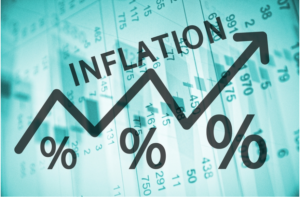Ifølge Goldman Sachs fører coronakrisen til en periode med hurtige og store forandringer i erhvervslivet. Banken taler om Den store Accelleration, hjulpet på vej af Federal Reserve, som har reageret hurtigere og kraftigere end under Finanskrisen. Det får betydelig virkning på virksomhedssektorer som it og sundhed, og det betyder for investorerne, at de også skal reagere hurtigt, hvis de vil have et godt afkast. Hurtighed er en dyd, ikke et problem. Investorerne skal ikke blinke, lyder meldingen.
Uddrag fra Goldman Sachs:
Don’t Blink
The COVID-19 pandemic, much like the global financial crisis, is a catalyst for change. If the global financial crisis created a “new normal,” the coronavirus outbreak has ushered in a time of rapid change. Welcome to the “Great Acceleration.”
The pandemic’s accelerating effect has been immediate in some areas: the sudden halt in economic activity, the rapid global policy response and the speed of market moves in response to these events. But the pandemic is acting as an accelerant across many dimensions.
Almost anywhere we look—from healthcare to real estate to US-China relations to technology to society and socially-aware investing—the coronavirus is accelerating existing trends and driving new ones. In our opinion, investors looking to generate returns may need to be equally fast.
As money managers, the most common question we get today is whether the recovery in financial markets has moved too far, too fast, relative to fundamentals. After all, the US economy is in recession, unemployment is near record highs and businesses face unprecedented challenges and an uncertain outlook.
These are serious issues, but from an investment perspective, we think it is more important to focus on the longer-term dynamics of the Great Acceleration.
We think the most important dynamic is the size and speed of the response by monetary and fiscal policymakers around the world, which has been distinctly different compared to previous crises. The US Federal Reserve (Fed), for example, has added $3 trillion to its balance sheet—more than the UK’s entire 2019 gross domestic product—in just three months. After the 2008-2009 global financial crisis, it took the Fed more than five years to expand its balance sheet by a similar amount (Exhibit 1).
EXHIBIT 1: FED BALANCE SHEET EXPANSION

Source: GSAM, Bloomberg. Global Financial Crisis data is Aug. 13, 2008 to Nov. 27, 2013. 2020 data is Feb. 5, 2020 to June 3, 2020. Past performance does not guarantee future results, which may vary.
As we saw following the global financial crisis, an aggressive Fed can keep government bond yields low for a long time. Over time, low government bond yields can push investors out along the risk spectrum, compressing risk premiums and generating attractive returns well beyond the initial recovery (Exhibit 2).
EXHIBIT 2: US HIGH YIELD RETURNS

Source: GSAM. Bloomberg US High Yield Index. Global Financial Crisis data from Aug. 8, 2008 to Nov. 29, 2013. 2020 data is Feb. 7, 2020 to June 11, 2020. Past performance does not guarantee future results, which may vary.
In the current crisis, the aggressive policy response has fast-forwarded this process. But the speed is a feature, not a bug. The Fed and other central banks need to provide liquidity to businesses and consumers as a bridge to the other side of the pandemic crisis. The more quickly and cheaply that liquidity can be provided, the faster and stronger the recovery will likely be.
Markets are forward-looking and investors are both anticipating and facilitating a better future. With government bond yields stuck near zero, US investment-grade companies have been able to raise more than $1 trillion in liquidity from investors seeking higher return potential.
That liquidity is providing companies with a bridge to the other side of the crisis. The spill-over effect into riskier assets has also been accelerated, with equities, high yield and emerging market bonds all recovering rapidly from their initial sell-off.
Bumps in the road likely lie ahead. Investors realized that last week. When fears of a second wave of coronavirus infections rise, markets will focus on the short term.
If you are invested, focus on the long-term implications of the policy response—and the diversifying benefits of a high quality fixed income portfolio. However, with ample liquidity, sectors may not remain on sale for long. In the Great Acceleration, we think the implications for investors are simple: Don’t blink.








